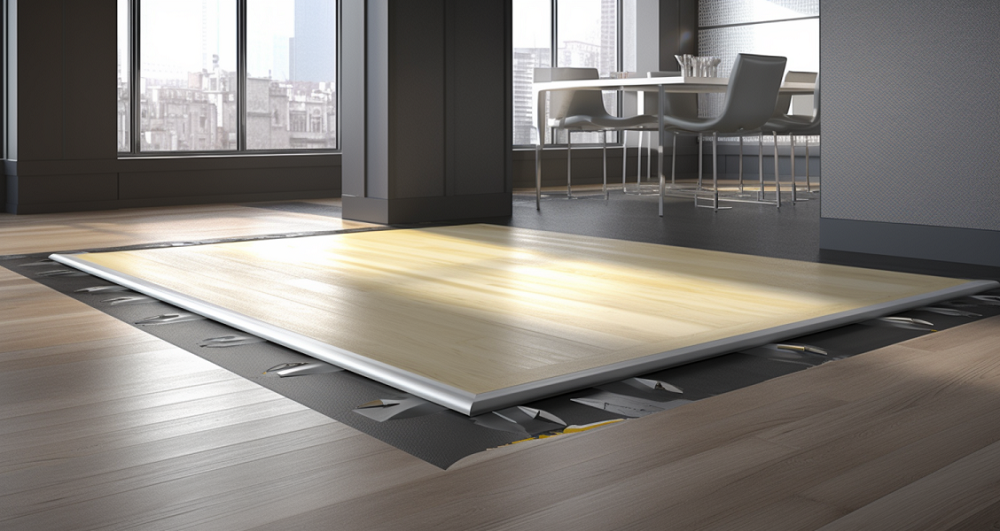Access floors, also known as raised floors, are a popular flooring solution that can provide acoustic benefits in many commercial buildings. By elevating the floor above the structural slab, a raised floor system creates a void that helps reduce noise transmission. Here, we explore how raised floors contribute to sound insulation and discuss some key factors that impact their acoustic performance. We will also break down how a raised access floor system can help decrease both impact and airborne noise between spaces. Details on measuring a floor’s acoustic properties using Impact Insulation Class (IIC) ratings will also be covered. The guide aims to help you better understand how raised floors can enhance sound quality in offices, data centers, and other applications.

How Raised Access Floor Reduce Noise and Sound Insulation?
Raised floors can provide various benefits, including improved acoustic performance. The acoustic performance of a raised floor system depends on several factors, such as the design of the floor system, the materials used, and the installation process. Here are some considerations regarding raised floor acoustic performance:
- Impact Noise Reduction: Raised floors can help reduce impact noise transmission between floors. Impact noise occurs when there is direct contact between objects, such as footsteps or the movement of furniture. A raised floor system can act as a buffer, absorbing and dampening the impact noise, thus minimizing its transmission to the rooms below.
- Airborne Sound Insulation: Raised floors can also contribute to airborne sound insulation. Airborne sound is generated by sources such as voices, music, or mechanical equipment. The floor system, including its structure and materials, can help block or absorb airborne sound waves, reducing their transmission between floors.
- Mass and Density of Floor Materials: The mass and density of the raised floor components play a crucial role in acoustic performance. Heavier and denser materials, such as concrete or solid wood panels, are generally more effective in reducing sound transmission compared to lighter materials. Consider using acoustic-rated panels specifically designed for noise reduction.
- Floor Coverings: The type of floor covering used over the raised floor system can affect its acoustic performance. Carpeting, for example, provides additional sound absorption and can help reduce both impact and airborne noise. Harder surfaces, like tile or hardwood may reflect more sound, allowing greater sound transmission.
- Proper Installation: Correct installation of the raised floor system is vital for optimal acoustic performance. Ensure that the floor system is installed according to the manufacturer’s guidelines, including proper sealing, gasketing, and the use of acoustic underlays if recommended. This helps minimize sound leakage and maximize the floor’s acoustic properties.
- Integrated Acoustic Solutions: In some cases, it may be beneficial to incorporate additional acoustic treatments alongside the raised floor system. These could include the use of acoustic ceiling panels, wall treatments, or sound-absorbing materials in the room to further enhance the overall acoustic performance.
It’s important to note that while raised floors can contribute to improved acoustic performance, they are just one component of a comprehensive acoustic design strategy. Other factors, such as wall construction, ceiling design, and HVAC system noise control, should also be considered to achieve optimal acoustic conditions in a space. Consulting with an acoustic engineer or specialist can provide tailored recommendations based on the specific requirements of your project.
Raised Floor Impact Insulation Class Ratings
The Impact Insulation Class (IIC) is a rating system used to measure the impact sound insulation performance of a floor assembly, including raised floors. It quantifies the ability of a floor system to reduce the transmission of impact noise, such as footsteps, to the space below. The higher the IIC rating, the better the impact sound insulation.
The IIC rating is determined through standardized testing procedures outlined in ASTM E492 and ASTM E989. During the test, a standard tapping machine simulates the impact noise, and sound levels are measured in the receiving room below. The measured sound levels are then compared to a reference contour, and the IIC rating is assigned based on the amount of sound reduction achieved.
Typical IIC ratings for raised floor systems range from about 45 to over 80. Higher performance floors may reach IIC 85-90. For critical noise-sensitive environments, a raised access floor with a high IIC 80+ may be specified to provide excellent impact insulation.
The main factors that affect a raised floor’s IIC rating include its design, construction materials used, floor tile materials, tile thickness, thickness, and properties of insulation or acoustic pads below the floor system.
HUIYA’s raised floor has ultra-high acoustic performance, ensuring perfect sound insulation and noise reduction whether it is Office Raised Floor or Date Center Access Floor. If you want to know more, contact us now!
